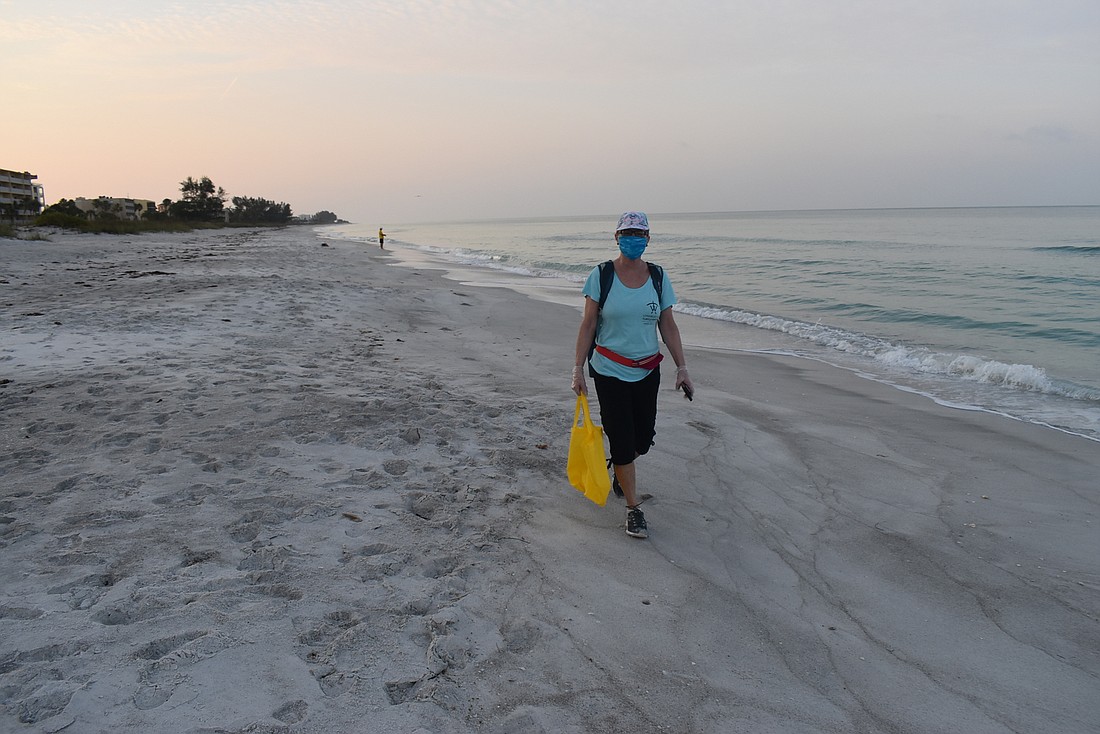- July 26, 2024
-
-
Loading

Loading

Though turtle season doesn’t start until May 1, you might want to consider getting in the habit of turning off your porch lights at night now if you live on the beach.
The turtles are here.
The Gulf of Mexico is warm, the beaches are empty and turtles, who don't really know how to read a calendar, are already testing the sands of Longboat Key to see if it’s the right place to nest. As of April 20, Longboat Key had two false crawls, meaning a turtle came up, checked out the beach and left without laying eggs.
The first nest in the area was found on Siesta Key on April 20.
“We have seen nesting in April for a number of years at this point, and so rather than relying on people from the public who happen to see it and happen to think to notify us, we started on April 15, to try to catch that first nest as part of our normal patrols,” Mote Marine Laboratory and Aquarium senior biologist Melissa Bernhard said.
Every nest is tallied and checked by accredited volunteers daily. Members of the Longboat Key Turtle Watch go on patrol each morning, carrying charts for recording, stakes for marking nests and bags to hold any trash they pick up along the way. Though Longboat Key’s public beaches are closed, the turtle watch volunteers have permission from the town, provided they follow rules of social distancing.
“We actually have written authorization to do what we're doing, that we're not just out having fun on the beach, that we're actually out there collecting the data,” said Longboat Key Turtle Watch vice president Cyndi Seamon.
Each Longboat Key volunteer carries a letter from the town stating that they are authorized to be on the beach that day,
These precautions and attention to detail are vital, as turtle patrollers “don’t want to abuse it and lose it,” Bernhard said. In years past, groups could get up to eight or more people patrolling an area, but now groups are two, maybe three, people, preferably who live in the same household.
“Part of our responsibility when functioning as an essential service is to ensure we are doing our part to prevent the transmission of the virus,” Mote staff biologist Kathy Klingensmith wrote in an email to all area volunteers.
Volunteers must wear masks, stay six feet apart (unless they’re from the same household), bring their own writing utensils, carry hand sanitizer, be honest with patrol partners about recent activity and not carpool.
“The only other time we've worn masks was red tide,” Longboat Key Turtle Watch volunteer Connie Schindewolf said during a patrol April 18.
In 2019, the record for the number of nests on beaches from Longboat Pass to Venice was broken, for a total of 1,342 nests total on Longboat Key alone. Loggerheads overwhelmingly make up the majority of nests year after year, but green and leatherback turtles find their way to the area as well in smaller numbers.
“I’m pretty sure we’ll have a lower green (nesting amount) this year,” Bernhard said. “I’m almost 100% certain — ‘almost’ only because if I say I’m 100% certain, they will come out and say, ‘Ha ha, we’re turtles and we’re going to prove you wrong,’ that loggerheads will be 99% of our nesting.”
The same turtles don’t nest every year, often taking a year or two to recoup their energy stores, Bernhard said, meaning that this year’s nesters will not be the same record-breakers from last year.
“I’m not sure if we will reach the record that we created or if we’re going to exceed that,” Bernhard said. “I don't know if this year's low is still high compared to previous low years.”
Green turtles in particular have an every-other-year pattern, so a downturn in their nests this year would not be cause for concern. However, the trend of nesting numbers in general all over Florida has been going up for several years now, so there is cautious optimism about a population increase.
“Either there are more turtles out there that are nesting, or the turtles that are out there are nesting more frequently,” Bernhard said. “Or there are more turtles coming here instead of to other places. Those are all possibilities.”
Even with an upward trend, it's difficult to know if numbers are truly going up overall without looking at tracking and tagging data of where the turtles travel, Bernhard said.
“We're so privileged to be able to share this environment with them,” Seamon said. “It’s their house.”